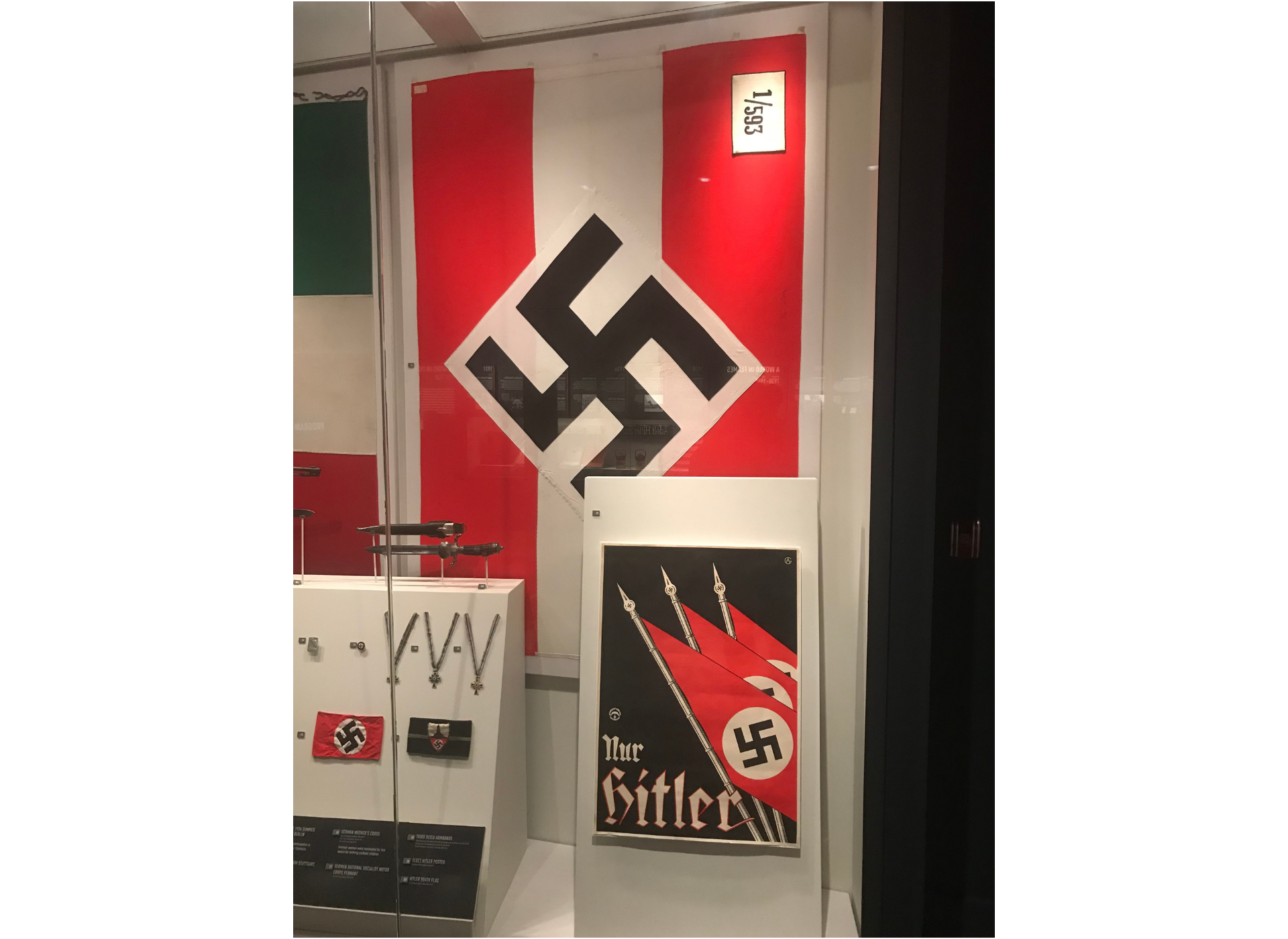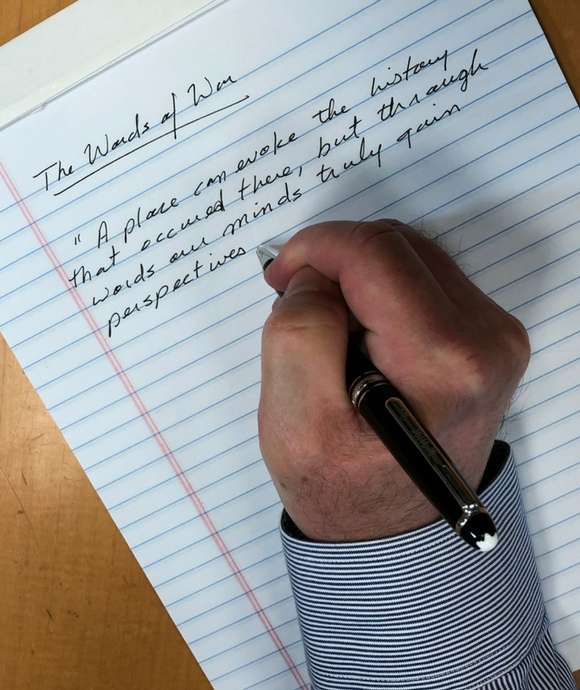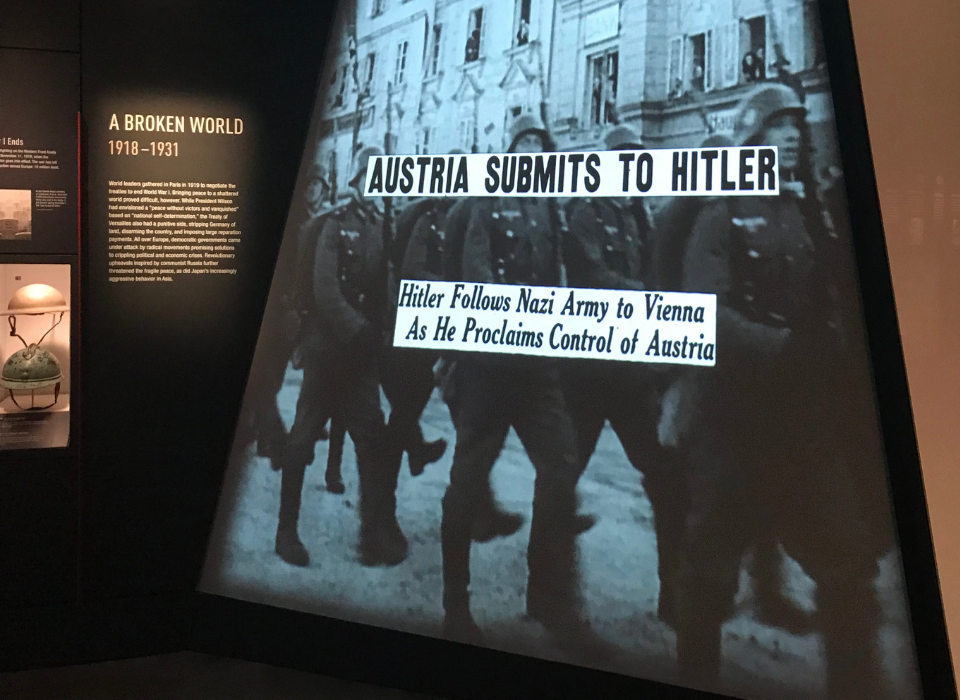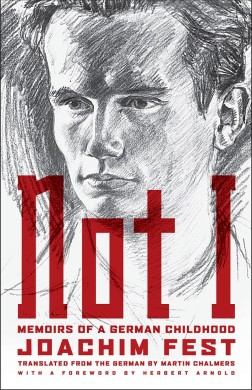Top Image: Hitler's Anschluss with Austria in the Gathering Storm exhibit gallery at The National World War II Museum.
"At the beginning of 1938 I saw our neighbor Herr Hofmeister draw my father into the hallway and reproach him in a subdued voice for being too contrarian. He told him he should open his eyes at last! At the evening meal, when I asked my father why he put up with something like that, he conceded that basically Hofmeister was right. Things really were better than they had been. The seven or eight million unemployed had disappeared, as if by a conjuring trick. But the ten million or more Hofmeisters didn’t want to see the means by which Hitler achieved his successes. They thought he had God on his side; anyone who had retained a bit of sense, however, saw that he was in league with the Devil.
“Wolfgang asked if that was more than conjecture and whether there really were pacts with the Devil—and what was the theological explanation for it? We frequently came back to this topic, which had a strange fascination for us. Of course, my father soon brought the conversation around to the historical Dr. Faustus and attempts by the medieval alchemists to produce gold, jewels, or the philosopher’s stone in their laboratories, then he regularly concluded with Goethe’s great play, Faust.
“These discussions came to an abrupt end in March of that year, when German troops crossed the border into Austria under billowing flags and crowds lined the streets, cheering and throwing flowers. Sitting by the wireless we heard the shouted Heil!s, the songs and the rattle of the tanks, while the commentator talked about the craning necks of the jubilant women, some of whom even fainted.”
Joachim Fest, Not I: Memoirs of a German Childhood, p. 118-119.
What is memorable about this passage from Joachim Fest’s memoir of his youth growing up in Nazi Germany is the moral confusion and clarity of the historical moment, experienced by 12-year-old Joachim, his family members, and their neighbors, as they attempt to make sense of the tumultuous rise of Adolf Hitler.
The encounter between Joachim’s father Johannes and his neighbor is instructive as a conversation that must have occurred almost daily among Germans in the later 1930s. As his father conceded, the Nazi government had in fact absorbed unemployment through spending on vast public works programs—the autobahn was of course regularly promoted as an example. But the German rearmament campaign, conducted first in secret and then openly with the public introduction of the Luftwaffe (Germany’s air force) in 1935 and the reoccupation of the Rhineland in 1936 (both banned under the Versailles treaty settlements) clearly indicated increasingly aggressive military intentions on Hitler’s part.
Most importantly, Hitler had consolidated his dictatorship within Germany. Hitler removed internal opposition within the Nazi party to his rule via mass murder in the Night of the Long Knives on June 30, 1934, and the courts looked the other way. Then following the death of President von Hindenburg in August 1934, he took the opportunity to require the German army to pledge their allegiance directly to him. In January 1938, about the time that the neighbor Mr. Hofmeister was appealing to Joachim’s father to be reasonable, Hitler and his henchmen Heinrich Himmler and Reinhard Heyrdrich at the SS were scheming to topple two leaders of the German General Staff who had been less than enthusiastic about his plans. The SS produced false sex scandal allegations against Generals Blomberg and Fritsch, who were forced to resign. Their departures cleared the way for Hitler to pursue his new foreign policy goals of territorial expansion, which many predicted would surely end in war. The next step would be incorporating Austria into the German Third Reich.

Hitler's Anschluss with Austria in the Gathering Storm exhibit gallery at The National World War II Museum.
This is what makes the rest of the passage interesting: young Joachim and his brother and father discuss the realities of pacts with the devil. For those of us today who know the history, it is clear to readers that the Hofmeisters of Germany have made such a pact, gaining economic security in the short term at the expense of overlooking the fact that they have given away their political voice to a dictator who will soon engage in aggressive war, and is willing to use any means necessary to gain his objectives. I think that most people can at least understand the thinking of people like Mr. Hofmeister, and also admire Johannes Fest, Joachim’s father, for his principled resistance and clearer understanding of what was at stake. But neither of them truly knew what was in store for the future, nor were they in control of events.
The concluding paragraph in this passage makes a great impact for several reasons. First, it gives a sense of a world going mad in real time: Hitler proceeded with his plans for an Anschluss with Austria. With war a threat until Britain and France agreed that they would allow the Austrians to determine their political fate with a plebiscite, the Austrians opened the gates on the borders to the German Wehrmacht, and they were greeted by the people with hysterical enthusiasm. Second, Hitler’s legend and power were greatly enhanced, his will emboldened, and a world war came yet another step closer. Finally, after Hitler’s triumph in Austria, readers can only wonder at how much more difficult the next conversation between young Joachim’s father and Mr. Hofmeister must have been, and marvel with appreciation at how Johannes Fest managed to keep his moral compass at a time when so many others had lost their bearings.

“A place can evoke the history that occurred there, but through words our minds truly gain perspectives and understanding of what it was like to know, feel, experience, hope, fail, triumph, and live through events from which we ourselves were absent. The written word is our most intricate map to retrace and reconstruct what we think happened, and ultimately brings us back to ourselves.”
– Keith Huxen, PhD , Senior Director of Research and History, The National WWII Museum
Keith Huxen
Keith is the former Senior Director of Research and History in the Institute for the Study of War and Democracy at The National WWII Museum.
Cite this article:
MLA Citation:
APA Citation:
Chicago Style Citation:






![Max Fuchs, New York City cantor, sings as Rabbi Sydney [sic] Lefkowitz, Richmond, VA, conducts the first Jewish services from Germany.](/sites/default/files/styles/max_650x650/public/2025-10/image1.jpg)



